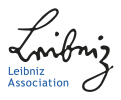Prof. Erich Becker (North West Research Associates, Boulder, CO, United States) Dynamical coupling from the troposphere to the thermosphere during the SSW 2017
Prof. Erich Becker (North West Research Associates, Boulder, CO, United States) will deliver a talk on the topic "Dynamical coupling from the troposphere to the thermosphere during the SSW 2017" in the IAP colloquium this summer semester on Thursday, 7th April at 10:00 am.
He will discuss how the Multi-step vertical coupling (MSVC) describes a paradigm shift regarding the role of gravity waves (GWs) in the winter middle and upper atmosphere. It is well known that primary GWs propagate into the winter stratosphere and lower mesosphere, where they dissipate. However, since this process is localized in space and intermittent in time, secondary GWs are generated. These propagate into the lower thermosphere, dissipate, and generate tertiary GWs and so forth. Recent modeling and observational studies showed that secondary and tertiary GWs from MSVC are the predominant GWs in the upper mesosphere and in the thermosphere during wintertime. MSVC cannot be simulated with GW parameterizations as used in conventional whole atmosphere models.
In his presentation, he will describe the HIgh Altitude Mechanistic general Circulation Model (HIAMCM), which resolves medium-scale GWs from the surface up to z~450 km, including MSVC induced by primary GWs from jets, fronts, and orography. This is made possible by combining a sufficiently high spatial resolution with advanced methods for turbulent and molecular diffusion. Furthermore, the HIAMCM can be nudged to MERRA-2 reanalysis in the troposphere and stratosphere. The nudging is performed in spectral space and restricted to horizontal wavelengths larger than ~1500-2000 km. As a result, the generation, propagation, and dissipation of resolved GWs is not affected by the nudging and simulated like in the free-running model. He presents a recent application of the HIAMCM regarding the northern hemispheric winter 2016-2017, which was characterized by a strong polar vortex in late December and a major sudden stratospheric warming (SSW) in late January and early February. The HIAMCM simulates the well-known changes of the GW effects during the SSW in the winter middle atmosphere, including the reversal of the mesospheric GW drag and mesospheric cooling during the wind reversal. At higher altitudes, the model reveals a significant reduction of MSVC, resulting into much weaker GW activity in the thermosphere during the SSW when compared to the strong-vortex period. The wavelengths, phase speeds, and propagation directions of the simulated GWs in the thermosphere show a strong similarities with observed perturbations of total electron content (TEC) over Europe and North America, suggesting that these TEC perturbations and their response during the SSW are due to MSVC.












